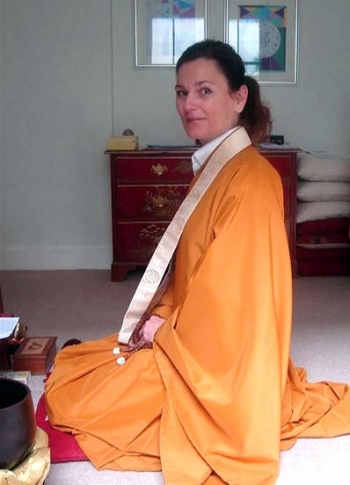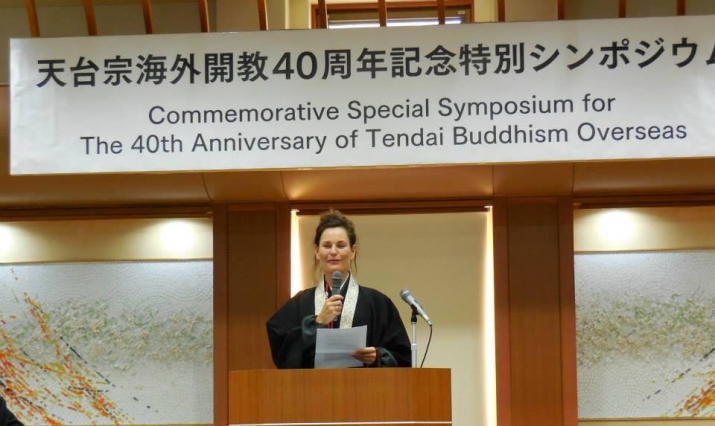Buddhism’s remarkable receptiveness has enabled it to evolve into a tradition of great diversity. Through pragmatic absorption and negotiation rather than conquest or imposition, Buddhism has enriched both itself and the cultures in which it has found a home. This receptivity was amply demonstrated when monks filtered into China from northern India and Central Asia, and when Japan and Korea adopted Buddhism from Tang dynasty (618–907) China and made it uniquely their own. One interesting phenomenon over the past several decades has been the proliferation of Buddhism in the West, Latin America, and Africa. In these traditionally non-Buddhist regions, Buddhism must be even more receptive in order to navigate established, globalizing cultures and trends. In the West, these established cultures are based broadly on a Christian heritage that is both complemented and contradicted by an increasingly normative secular, scientific worldview and social liberalism.
Denmark is a case in point: traditionally Christian, it is grouped with the “Nordic model” social democracies of Finland, Norway, Iceland, Greenland, the Faroe Islands, and Sweden. These countries, politically and socially, can be said to be liberal in that they are characterized by the separation of church and state, a broader secular ethos, and a social democratic political tradition. One tradition (apart from Vajrayana) that seems to have found a receptive foothold in Denmark is Tendai. Tendai is a Japanese interpretation of the Tiantai tradition, which was imported from China by Ganjin (688–763) and later Saicho (767–822). It is a syncretic tradition based on the Lotus Sutra, which advocates the One Vehicle (ekayana) doctrine: the advocacy of an all-embracing Buddhism that can unify all schools into one cohesive system through the concept of a transcendent and omnipresent Shakyamuni Buddha.
 Rev. Shomon. From tendai.dk
Rev. Shomon. From tendai.dkReverend Shomon, a Danish practitioner and member of the Tendai clergy, has served in the Buddhist ministry since 2010. She became a Buddhist in the summer of 2001, and has been based at the Tendai Dharma Center north of Copenhagen since May 2006. This center, which provides meditation services, retreats, and introductory courses, also serves as a home to Rev. Shomon and her husband and children. As an ordained Tendai priest (soryo), some of her many responsibilities include overseeing local groups across Denmark and traveling to teach or perform Tendai services and ceremonies.
“The Tendai Dharma Center serves a number of smaller local groups. At the Dharma Center we have retreats, study groups, and training for those seeking to ordain. At the local groups, people meet on a weekly or monthly basis to practice together,” she says.
Born Pia Trans in 1964, Rev. Shomon does not seem to feel that her tale is extraordinary. Indeed, her journey to ordination was quite natural for her: “Back in 1987 I went to school with a Buddhist monk, who introduced me to Buddhism. My interest grew over time, and at some point around the year 2000, my brother got involved with the Soka Gakkai movement. I was introduced to their specific kind of Buddhism, and then moved on to more traditional forms.”
She believes that most people in Denmark are looking for a more “contemplative” or meditation-based practice, paralleling the predominant interest in Buddhism in the Anglophone world, and that the more traditional practices of Tendai, such as the rituals and mantras, need to be introduced very carefully. In 2006, she took ordination as a temple assistant (doshu tokudo) to Monshin Paul Naamon, head priest (jushoku) of Jiunzan Tendai-ji, the temple of the Tendai Buddhist Institute in Canaan, New York State (he is also secretary general of the Tendai-shu North America District)—“I traveled [from Denmark] to see him for three weeks every year from 2005 to 2012. The past couple of years I’ve only met with him once, in Japan.”
“It was an easy decision to undergo full ordination as there was no Tendai sangha in Denmark when I started. Someone clearly had to go through the training, and I had the time (and the inclination) to do it,” she says. On 23 October 2010, 30 Japanese monks traveled to Canaan to oversee her full ordination with five monks at the Tendai Buddhist Institute. It was officiated by Venerable Komori Shukei, an envoy from Enryaku-ji in Japan. Enryaku-ji sits on Mount Hiei and is the Tendai school’s temple headquarters.
“My teacher, Monshin Naamon of the Tendai Buddhist Institute, has always supported me, as has my family, especially my husband, who took over for me at home when I had to go overseas for training. Obviously it has been difficult from time to time, learning Buddhism in a foreign language [Japanese]—but my teacher has been very helpful,” says Rev. Shomon. Having studied Tendai in the United States, she was expecting some cultural challenges in dealing with Tendai when she went for training in Japan. “But it has all been very easy,” she concedes.
Rev. Shomon feels there are two broad groups of seekers among those who attend her teachings: “I think there are those who have read about Buddhism and have an intellectual interest, and those who are interested in meditation and cultivation of the mind. Of course these two groups overlap to some extent. Most are also from a secular background, and that makes sense as Denmark is a very secular society. I’m sure that Buddhism will continue to be the fastest-growing religion in the country. It seems to be a perfect fit for the Danish character.”
Just what is the “Danish character?” Does it denote a secular society, an interest in psychology and mental and emotional health, or a growing curiosity about other religions in a traditionally Christian country? In this sense, there may be some truth to the generalization of Western seekers being preoccupied with understanding how the mind works. At heart, also, is a mutual receptiveness between Danish seekers and Buddhism, a willingness by both parties to absorb each other’s “character”—an openness that Rev. Shomon believes in very strongly.
She feels that letting go of anger and ignorance has been critical for her spiritual maturation. “My practice has definitely changed me, my life, and most importantly, my view on life. In my life before Buddhism, I used to feel a lot of anger and impatience; now, I sometimes find myself being calm and content in a challenging situation, and realize how this would once have been an occasion for anger and ignorance to take over.
“For me, the most inspiring thing about Tendai is that it is very open and accommodating, and accepting of all the various Buddhist methods—the ‘One Vehicle approach.’ I have a special interest in Mikkyo [Japanese esoteric Buddhism], but also value sitting meditation, zazen. In contrast, very few of my students are interested in Mikkyo—but the openness of Tendai is something people like. It lets us share more of ourselves spiritually.”
This kind of mutual receptiveness has helped Buddhism to gradually take root in regions with cultures far removed from those of “traditional” Buddhism. The story of the Tendai community in Denmark is just one example of how an ancient teaching, through a process of enculturation, can nourish the spiritual well-being of “non-traditional” Buddhists.
















